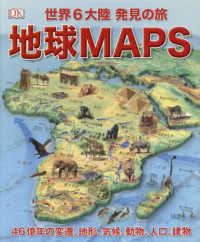- ホーム
- > 洋書
- > ドイツ書
- > Mathematics, Sciences & Technology
- > Technology
- > electronics, electrical engineering, telecommunications
Full Description
This book introduces several appearance-based place recognition pipelines based on different mapping techniques for addressing loop-closure detection in mobile platforms with limited computational resources.








